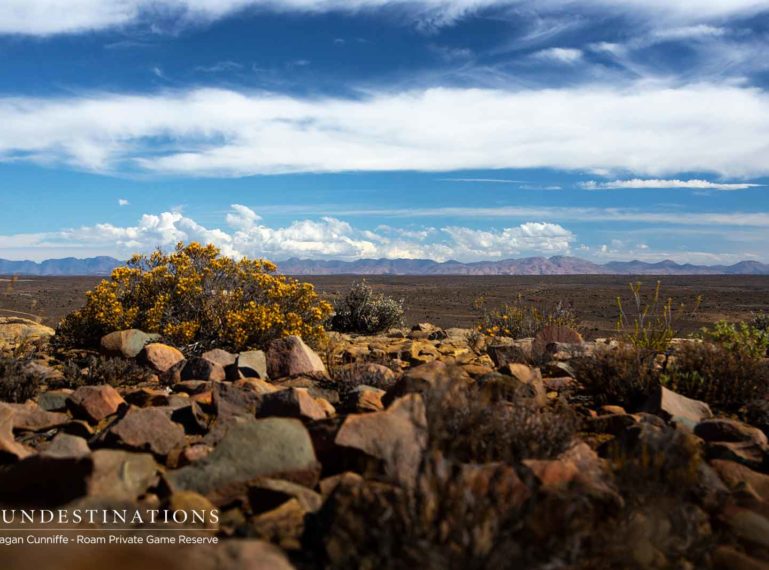
Roam Private Game Reserve is not only home to a veritable kaleidoscope of flower species, and harbour to thousands upon thousands of endemic animal, bird and insect species, but it is also an area steeped in fascinating history.
Until the other day – around 250 million years ago – a vast inland sea stretching more than 400 000 square kilometres covered what is the Karoo today. As the planet’s climate slowly changed, the water evaporated and left a lush basin crawling with reptiles and amphibians. Later on, it was inhabited by the types of plains game and predators that can today be seen, for instance, on the savannas of the Serengeti.
A combination of further climate change, and more recent ubiquitous sheep- and cattle farming as well as changing weather patterns caused the verdant grasslands to recede, slowly morphing into the semi desert that it is today.
The Karoo, covering nearly 40% of South Africa’s land surface (the largest plateau of its kind outside of Asia) and straddling four of SA’s nine provinces, is also an archeologist’s and paleontologist’s dream. Rich fossil beds spanning more than 600 millions years of history suggest we haven’t even begun to scratch the surface, so to speak. It has also been suggested that the Karoo, out of all the world’s many fossil-rich areas, may hold the highest number of evolutionary secrets and the answers to many questions.
The people that lived here, the hunter-gatherer people of the San, among others, thrived in this area for many millennia and lived in perfect harmony with the land and the creatures that roamed it. As a matter of fact, people inhabited this area for more than 100 000 years, and digs that found early Stone Age tools suggest human occupation here go back as far as a million years. Exciting archeological finds of animal bone- and plant traces have also led to important discoveries regarding the diets of early hominids.
Rock art and other signs of the San people that lived in and around the area of Roam Private Game Reserve, give further insight into the fascinating lifestyle and habits of these people. In fact, it’s no accident that the team at Roam introduced a coalition of cheetah to its 5 000 hectares of Karoo scrubveld, as the only known San painting of a cheetah can be found not far east of Roam. A cheetah’s biggest edge in the hunt is its phenomenal pace, and it is this quality that is so tailor made for the flat arid plains of the Karoo. And it’s no wonder the Roam coalition has adapted so seamlessly.
Point is, it is an area dripping in extraordinary history, and on a visit to Roam one gets a sense of ‘if only these koppies could speak’… An awareness of some ancient mystique that lies buried among its gentle undulations, and a consciousness of the countless untold mysteries burnt into the memory of this scorched piece of earth. Add to that the Karoo’s blazing night skies and a Milky Way that glows like nowhere else in South Africa, and one’s own worldly problems become instantly negligible, and a sense of perspective is restored.
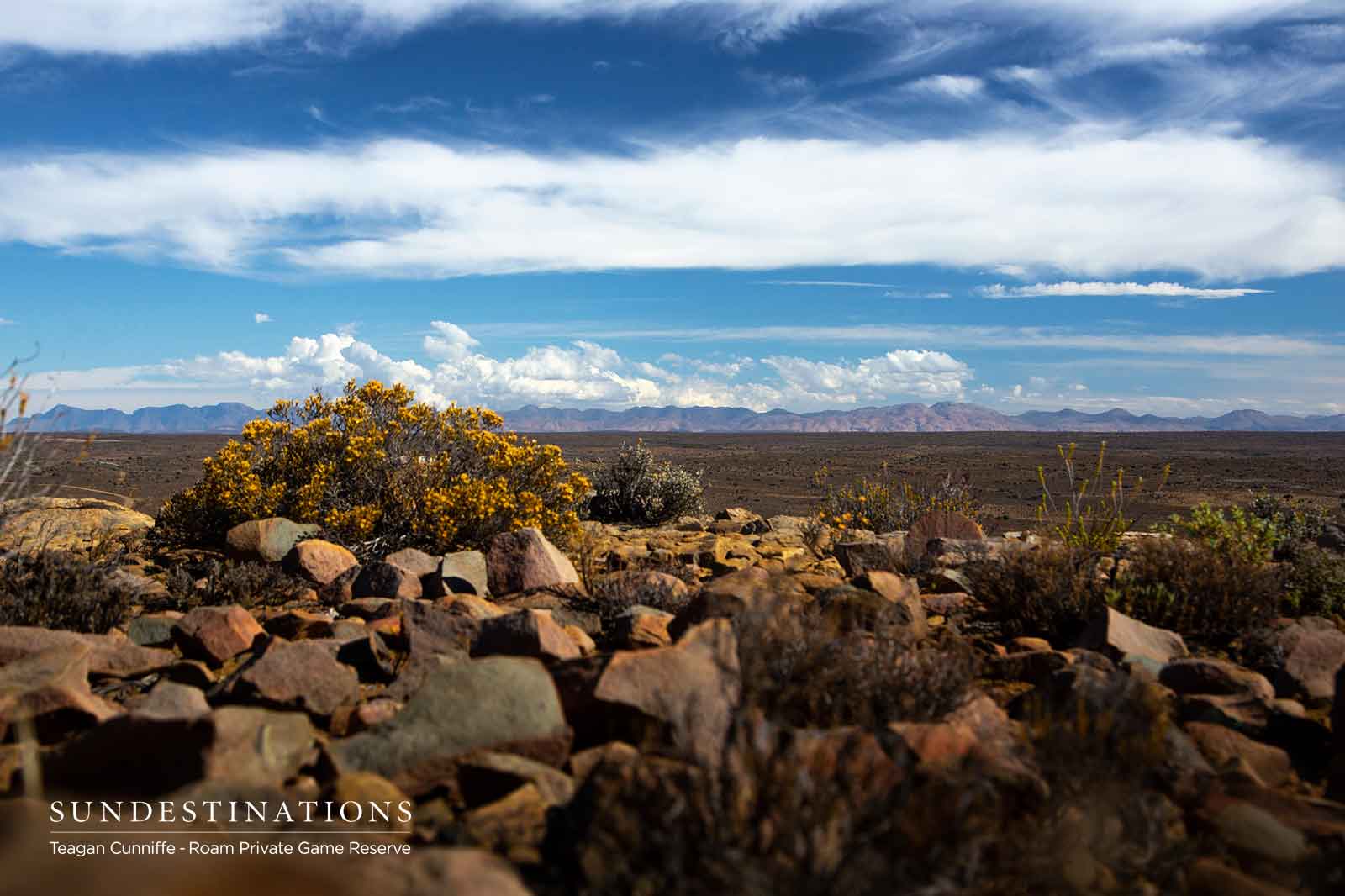
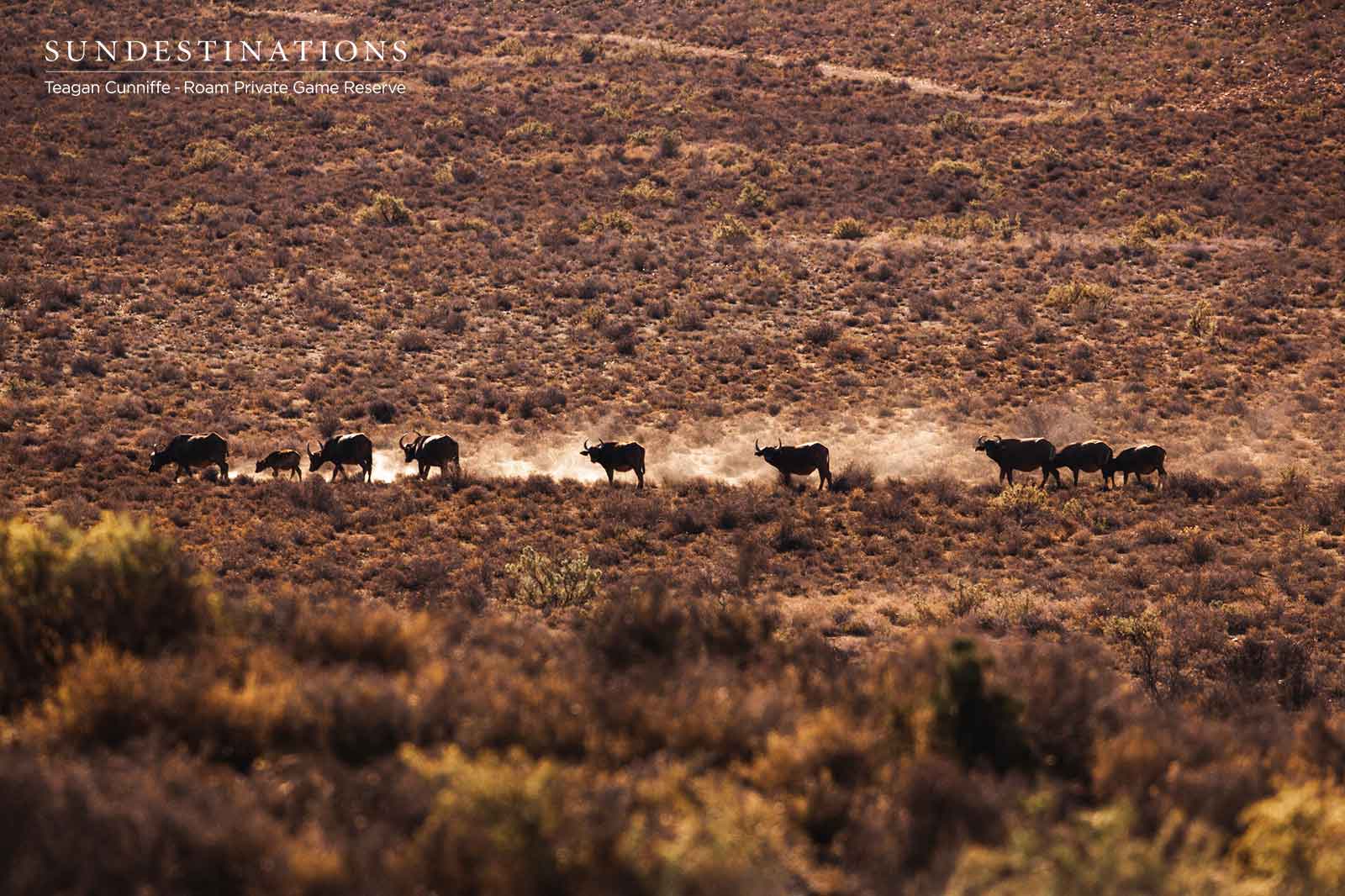
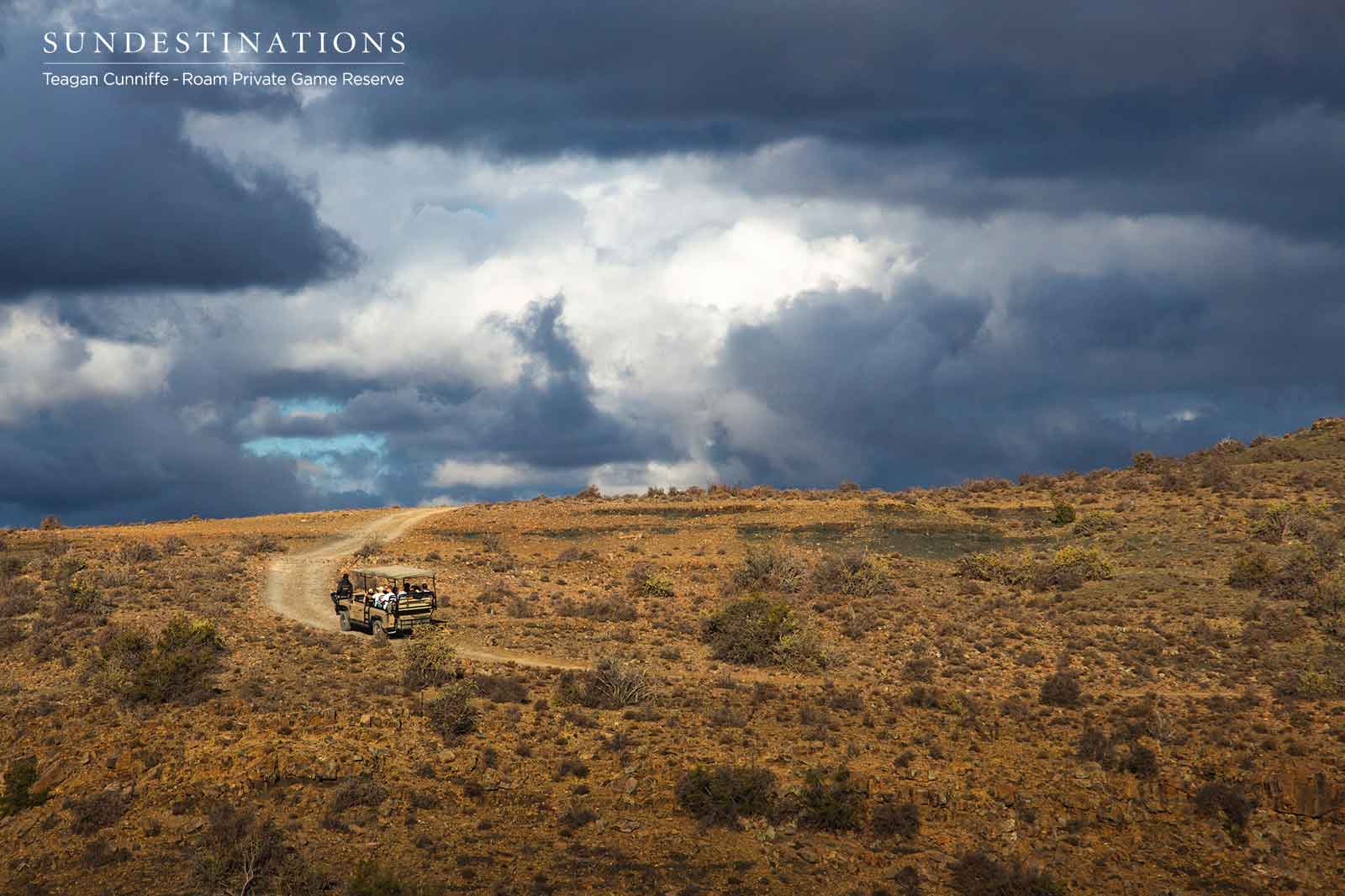
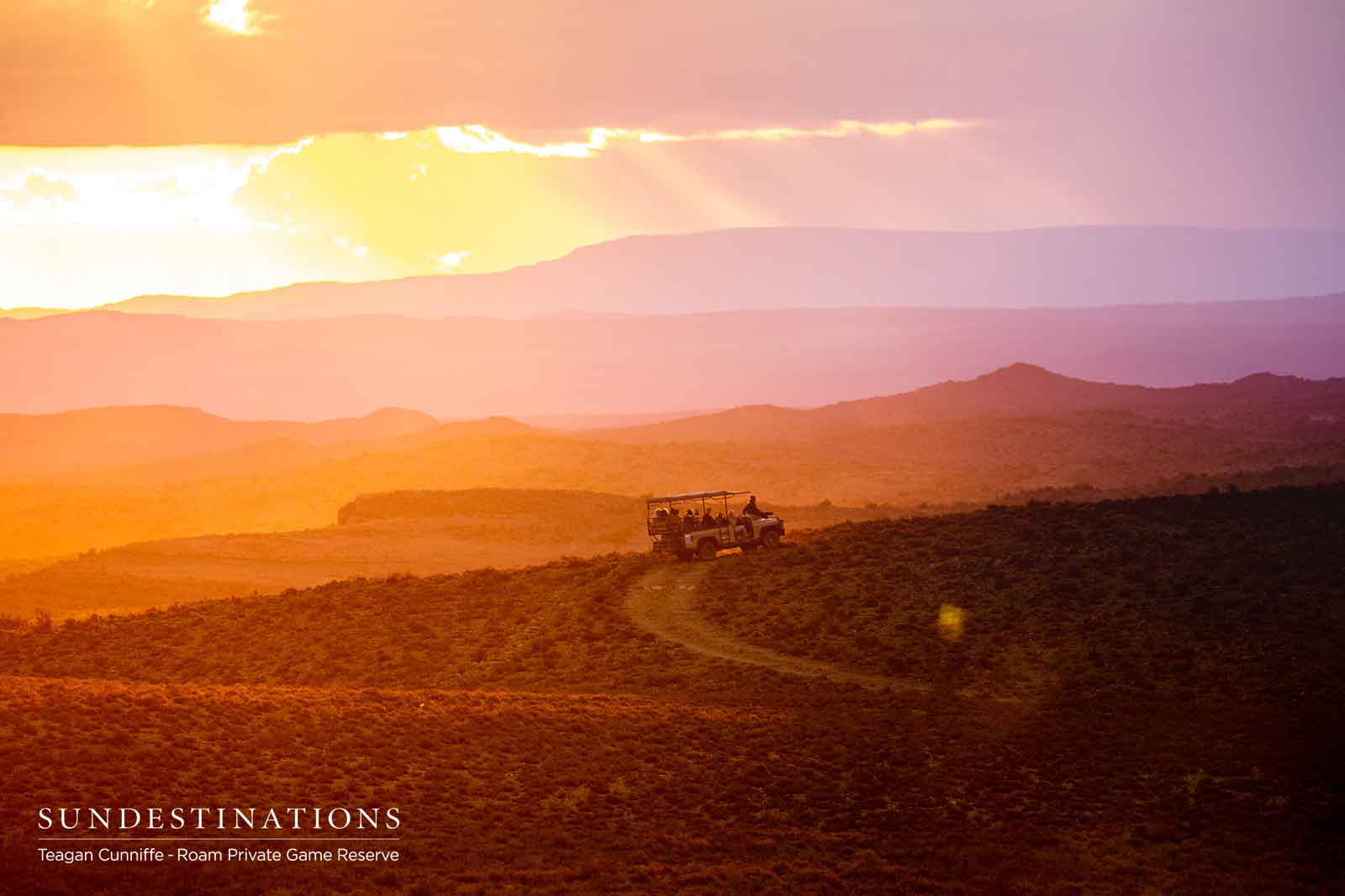
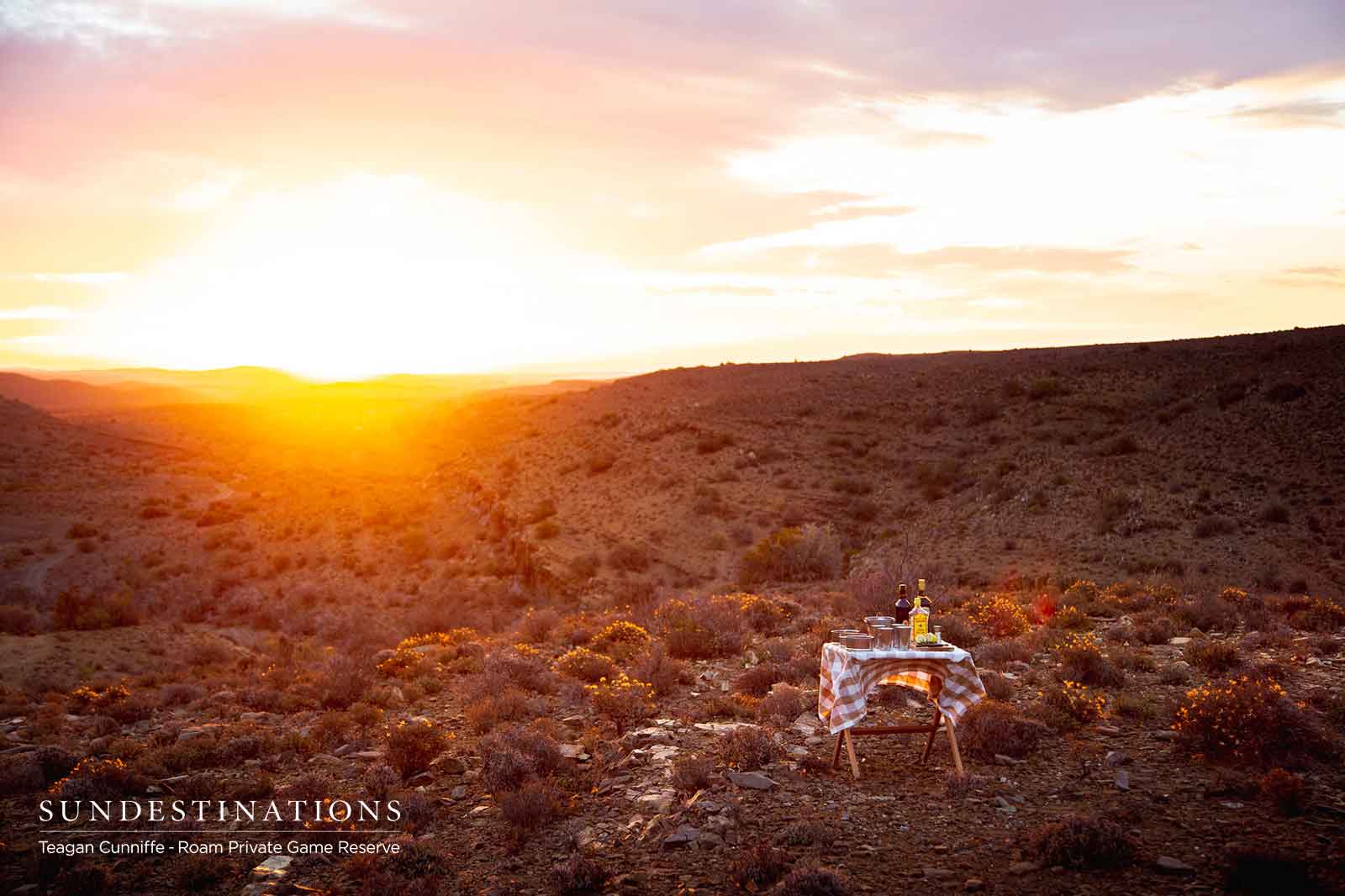
Keletso tsela
Carolynne